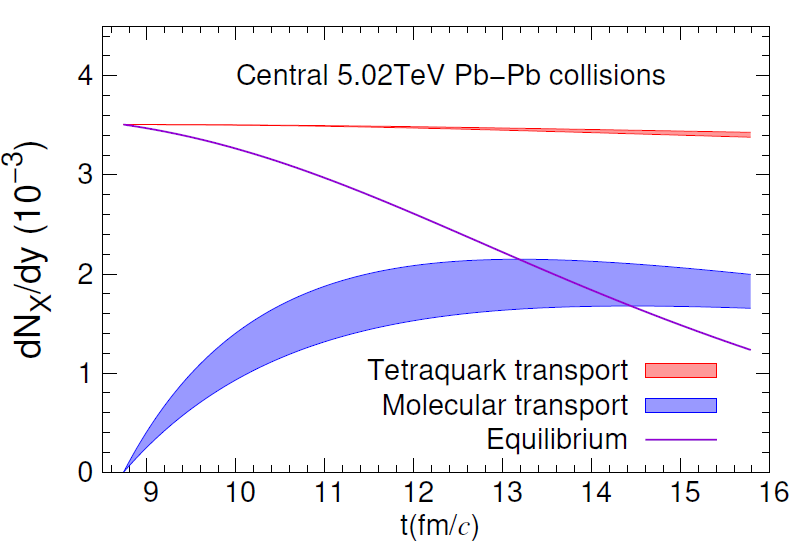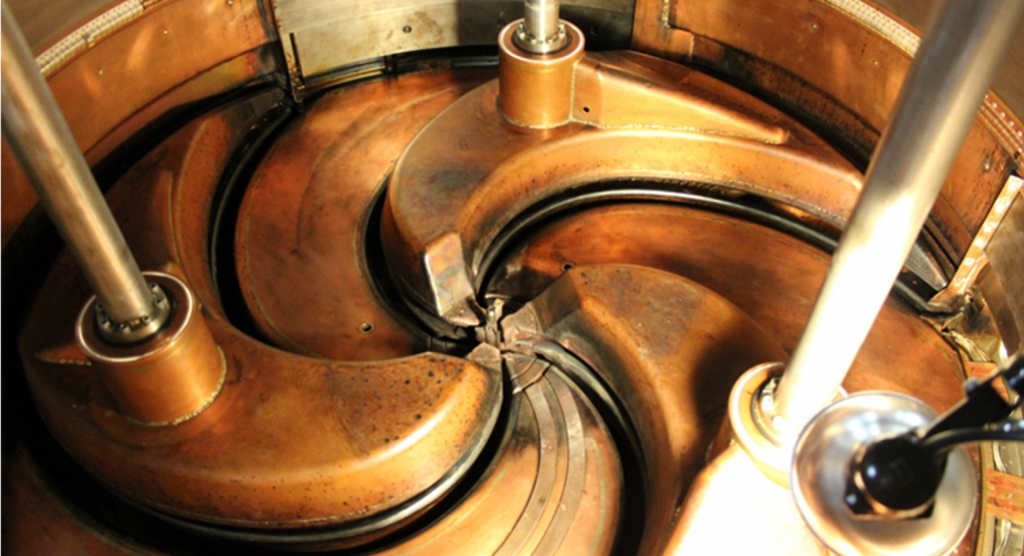Can the production systematics of the exotic X(3872) meson provide new information on its internal structure?

The Science
Since its discovery in 2003, the internal structure of the exotic X(3872) particle has been intensely debated, in particular whether it is a loosely bound hadronic “molecular” state or a compact 4-quark state. The production of this meson in high-energy heavy-ion collisions, in an environment rich of quarks and antiquarks, has been conjectured to shed new light on this problem.
The Impact
Previous calculations of X(3872) production in heavy-ion collisions, mostly carried out within coalescence models, have predicted that its yields are (much) larger in the loosely bound molecular scenario than for a compact tetraquark. Here, we find the opposite, i.e., larger production yields for a tetraquark than for a molecular structure, although not by much (around a factor of two). The reason is that the later production of the molecule state is driven by a smaller equilibrium limit as the latter decreases with decreasing temperature in the fireball expansion of a heavy-ion collision.
Summary
We have deployed a previously developed transport model for charmonia and bottomonia in heavy-ion collisions to calculate the time evolution of the X(3872) particle focusing on the hadronic phase of the fireball. The key role is played by two transport parameters: the equilibrium limit which only depends on the particle mass, and the inelastic reaction rate which encodes the structure information and is expected to be large for the molecule but much smaller for the tetraquark. This implies that the molecule is produced later in the collisions than the tetraquark. Since the equilibrium limit, calculated with a realistic number of charm-hadron states in hadronic matter, turns out to decrease as the fireball expands and cools, the production of X particles in the molecule scenario ends up at a smaller number than in the tetraquark scenario. Complementary information can be extracted from the transverse-momentum spectra, which are harder for the molecule due a larger blue-shift in the expanding fireball.
Publications
Biaogang Wu, Xiaojian Du, and Ralf Rapp, in preparation (2020).
Biaogang Wu, oral presentation at Hard Probes ‘20 Conference (May 31 – June 05, Austin, TX; online).
Contact
Authors: Biaogang Wu, Xiaojian Du and Ralf Rapp.
For more information, please contact Prof. Ralf F. Rapp at 0ude TnullOD umanulltnull nullTnullOnullD nullpmonullc TnullA nullppaRnull.

